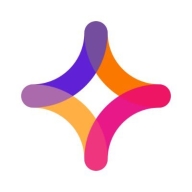

Jitterbit Harmony and Automic Automation compete in the field of automation solutions, with each product presenting distinct advantages. Jitterbit Harmony leads in cost-effectiveness and ease of deployment, while Automic Automation offers more sophisticated capabilities for complex tasks, providing greater flexibility in automation processes.
Features: Jitterbit Harmony's seamless API integration makes it ideal for businesses focused on connecting multiple platforms. It provides intuitive integration tools, pre-configured connectors to systems like SAP and Salesforce, and a user-friendly web-based GUI. Automic Automation excels with comprehensive workload automation, the ability to modify settings in real-time for tools like PeopleSoft, and versatile scripting capabilities for flexible and powerful process automation.
Room for Improvement: Jitterbit Harmony could enhance its advanced automation features to match broader process automation solutions. There are opportunities to optimize user interface flexibility and expand native AI-driven analytics. Automic Automation might require simplifying its initial setup and enhancing direct customer support engagement. The product could benefit from improving its out-of-the-box integration capabilities with new cloud platforms.
Ease of Deployment and Customer Service: Jitterbit Harmony offers a straightforward deployment process and robust customer service, making it suitable for organizations seeking quick and efficient integration. Automic Automation requires a more detailed setup but provides strong support for handling comprehensive automation challenges, appealing to businesses with complex needs.
Pricing and ROI: Jitterbit Harmony typically presents a lower initial cost and quicker ROI, appealing to organizations focused on budget efficiency. Though Automic Automation involves a higher upfront investment, it offers substantial returns for enterprises needing extensive automation features and scalability in managing complex tasks.
Automic Automation has helped reduce workload failure rates by fifty percent.
They react quickly when it is urgent.
They are highly knowledgeable in their product area and very easy to work with.
If you put the tickets in for which you need help right away, they get back to you right away.
We have small clients running a thousand tasks per day and big enterprises running one million or two million tasks per day.
The solution effectively supports our existing user base and is equipped to scale further.
It does not perform real-time scalability in our environment, but because of the way we have built it, it can scale well past any thresholds with no issues.
The stability of the solution is excellent.
In a well-tuned environment, it runs very smoothly.
So far, I have not encountered any issues related to instability such as lagging, crashing, or downtime.
It does not work as well for activities that require real-time input/output, but it works very well for batch, ETL, or similar cases.
Pricing is a major issue for some clients due to changes in Broadcom's pricing model, causing some to seek alternative solutions.
A feature that provides a dependency chart or tree diagram would be very helpful.
Broadcom decided to change the way of licensing by moving to the number of jobs runs and then they say that clients have to pay three million because they run one million jobs per day.
Due to the increased pricing, some of them are thinking of reducing tasks in Automic to have fewer executions.
The pricing has been increasing significantly over the years, raising operational costs instead of reducing them.
A standout feature is the comprehensive versioning, allowing easy rollback to previous states.
Designing workflows is made easier by the graphical user interface, simplifying complex tasks.
It supports high availability by operating multiple servers concurrently, which means users do not experience outages or the need to log in again, even if some servers are updated.
| Product | Market Share (%) |
|---|---|
| Automic Automation | 7.9% |
| Jitterbit Harmony | 0.3% |
| Other | 91.8% |


| Company Size | Count |
|---|---|
| Small Business | 19 |
| Midsize Enterprise | 14 |
| Large Enterprise | 66 |
| Company Size | Count |
|---|---|
| Small Business | 8 |
| Midsize Enterprise | 3 |
| Large Enterprise | 1 |
Automic Automation offers a web-based GUI for high scalability and flexibility, integrating with platforms like SAP and Oracle. It promotes efficient process automation and supports multiple OS environments, benefiting diverse industries with its robust predictive capabilities.
Automic Automation facilitates process automation and workload management, providing valuable integration with applications like SAP and Oracle. It supports a wide range of operating systems and environments, enabling seamless workflow automation. It features a web-based interface accessible across devices, ensuring scalability and flexibility for complex job automation. Users find its predictive capabilities and platform support instrumental in enhancing operations, although improvements are noted in reporting, cloud integration, and documentation. Licensing and pricing structures also present room for optimization, along with workflow dependency management and smoother upgrade paths.
What are the key features of Automic Automation?Automic Automation sees implementation in industries like banking, finance, and telecommunications, where it automates ERP systems, schedules batch jobs, integrates workloads, and manages file transfers. By supporting SAP, Oracle, and ETL tasks, it aids efficiency and workload automation across varied environments including cloud and mainframe systems.
Jitterbit Harmony offers an advanced integration platform that simplifies data transformation, helps users quickly connect apps, and automates workflows, streamlining complex business processes efficiently.
Designed to meet the high demands of modern businesses, Jitterbit Harmony enables seamless integration across cloud and on-premise environments. By leveraging its powerful tools and user-friendly design, users can accelerate innovation, reduce operational costs, and enhance productivity. It bridges the gap between traditional and emerging technologies, ensuring organizations can adapt quickly to market changes and remain competitive.
What are the key features of Jitterbit Harmony?Jitterbit Harmony finds its application across numerous industries, from enhancing data integration in the healthcare sector to optimizing supply chain logistics in manufacturing. It supports financial institutions by improving transaction processing and facilitates real-time data connectivity in retail environments, making it a versatile choice for diverse industries looking to innovate rapidly.
We monitor all Workload Automation reviews to prevent fraudulent reviews and keep review quality high. We do not post reviews by company employees or direct competitors. We validate each review for authenticity via cross-reference with LinkedIn, and personal follow-up with the reviewer when necessary.